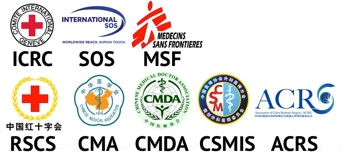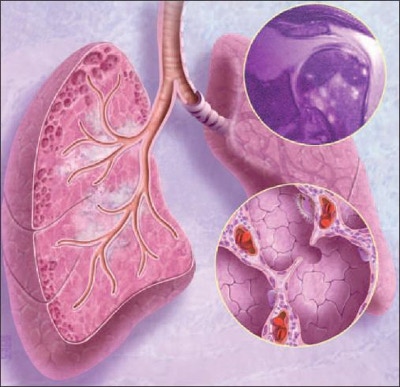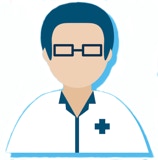

Doctors
Institutions
Conditions
Drugs
Insurances
TCM
Research
About Us
Contact Us
What is pulmonary sarcoidosis?
Sarcoidosis is a rare disease caused by inflammation. It usually occurs in the lungs and lymph nodes, but it can occur in almost any organ. Sarcoidosis in the lungs is called pulmonary sarcoidosis. It causes small lumps of inflammatory cells in the lungs. These lumps are called granulomas and can affect how the lungs work. The granulomas generally heal and disappear on their own. But, if they don’t heal, the lung tissue can remain inflamed and become scarred and stiff. This is called pulmonary fibrosis. It changes the structure of the lungs and can affect your breathing. Bronchiectasis can also occur. This is when pockets form in the air tubes of the lung and become infected. But, these problems are not common.
What causes pulmonary sarcoidosis?
The cause of pulmonary sarcoidosis is unknown. Experts think that bacteria, viruses, or chemicals might trigger the disease. It may also be genetic. This means a person is more likely to develop sarcoidosis if someone his or her close family has it. This is an active area of research.
What are the symptoms of pulmonary sarcoidosis?
Most people with sarcoidosis do not have symptoms and probably don't know they have the disease. It can affect many organs, causing a variety of symptoms. Pulmonary sarcoidosis can reduce the amount of air the lungs can hold and cause lung stiffness.
The following are the most common symptoms of pulmonary sarcoidosis. However, each person may experience symptoms differently. Symptoms may include:
Shortness of breath, which often gets worse with activity
Dry cough that will not go away
Chest pain
Wheezing
Sarcoidosis can also cause symptoms not directly related to the lungs, such as:
Extreme tiredness
Fever
Inflammation of the eyes and pain, burning, blurred vision, and light sensitivity
Night sweats
Pain in the joints and bones
Skin rashes, lumps, and color changes on face, arms, or shins
Swollen lymph nodes
Weight loss
The symptoms of pulmonary sarcoidosis may look like other conditions or medical problems. Talk with your healthcare provider for a diagnosis.
How is pulmonary sarcoidosis diagnosed?
In addition to a complete medical history and physical exam, tests used may include:
Chest X-ray. A type of imaging test used to assess the lungs, as well as the heart. Chest X-rays may show important information about the size, shape, and location of the lungs, bronchi (large breathing tubes), and mediastinum (area in the middle of the chest separating the lungs).
CT scan. An imaging test that uses X-rays and computer technology to produce horizontal, or axial, images or slices of the body. A CT scan shows detailed images of any part of the body, including the lungs. CT scans are more detailed than regular X-rays. They can be used to diagnose lung diseases, monitor disease progression, and evaluate response to treatment.
Pulmonary function tests. These are tests that help to measure the lungs' ability to move air in and out of the lungs. The tests are usually done with special machines into which the person must breathe.
Blood tests. These can be used to check the amount of carbon dioxide and oxygen in the blood, evaluate liver and kidney function, and look for infection and other diseases.
Bronchoscopy. A long, thin, flexible tube with a light at the end is put down the throat and into the lungs. This lets the doctor to view the bronchi, the main airways of the lungs. It is done to help evaluate and diagnose lung problems. Lung tissue samples (biopsies) and lung washings (lavage) that remove cells from the lungs can be done through the bronchoscope.
Bronchoalveolar lavage. This is a procedure in which a sterile saline solution is put into the lungs through a bronchoscope and then suctioned out. The saline carries out cells from the lower respiratory tract, which can be checked under a microscope to help identify inflammation and infection. It can help rule out certain causes.
Lung biopsy. A test in which a small piece of tissue, cells, or fluid from the lungs is taken out and checked under a microscope.
Sarcoidosis is usually diagnosed when other lung disorders are ruled out.
How is pulmonary sarcoidosis treated?
Treatment is generally done to control symptoms and improve the function of organs affected by the disease. Steroid medicine, such as prednisone, may help reduce inflammation. It can be taken by mouth or inhaled. Other medicines, such as methotrexate, may be used in severe cases or if steroids don’t work.
In many cases, no treatment is needed for pulmonary sarcoidosis. Different treatments work better for different people. Sometimes more than one treatment is used. Most medicines used to treat sarcoidosis suppress the immune system.
You may also join a rehab program that includes education, exercise, and support. In severe cases, which are not common, oxygen therapy and even lung transplant may be needed.
Key points about pulmonary sarcoidosis
Sarcoidosis is caused by inflammation. Most cases of sarcoidosis are found in the lungs and lymph nodes, but it can occur in almost any organ.
Sarcoidosis in the lungs is called pulmonary sarcoidosis. It causes small lumps of inflammatory cells, called granulomas, in the lungs. They can affect how the lungs work.
The cause of pulmonary sarcoidosis is unknown.
The most common symptoms of pulmonary sarcoidosis are shortness of breath, which often gets worse with activity; dry cough that will not go away; chest pain; and wheezing.
Treatment is generally done to control symptoms or to improve the function of organs affected by the disease. Steroids are often used.
Next steps
Tips to help you get the most from a visit to your healthcare provider:
Know the reason for your visit and what you want to happen.
Before your visit, write down questions you want answered.
Bring someone with you to help you ask questions and remember what your healthcare provider tells you.
At the visit, write down the name of a new diagnosis, and any new medicines, treatments, or tests. Also write down any new instructions your healthcare provider gives you.
Know why a new medicine or treatment is prescribed, and how it will help you. Also know what the side effects are.
Ask if your condition can be treated in other ways.
Know why a test or procedure is recommended and what the results could mean.
Know what to expect if you do not take the medicine or have the test or procedure.
If you have a follow-up appointment, write down the date, time, and purpose for that visit.
Know how you can contact your healthcare provider if you have questions.
















